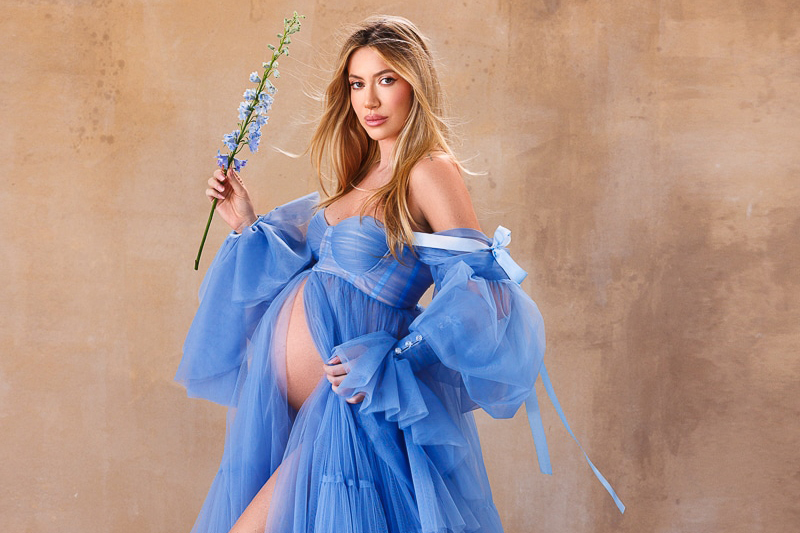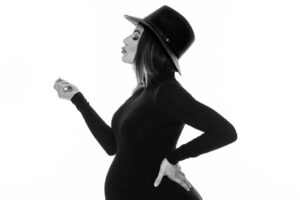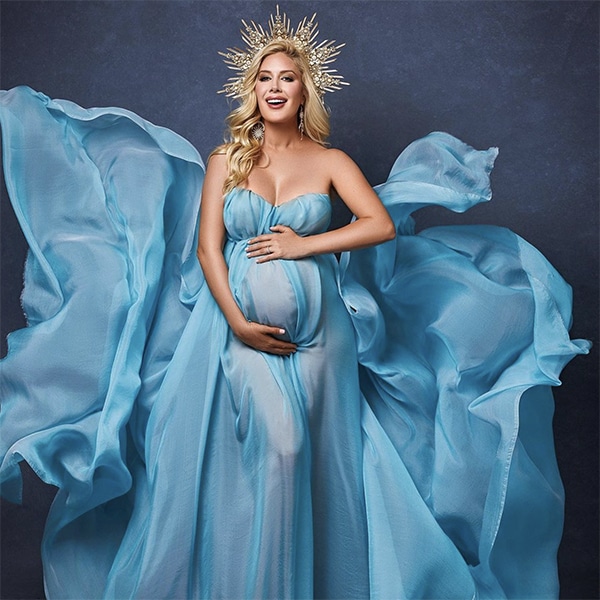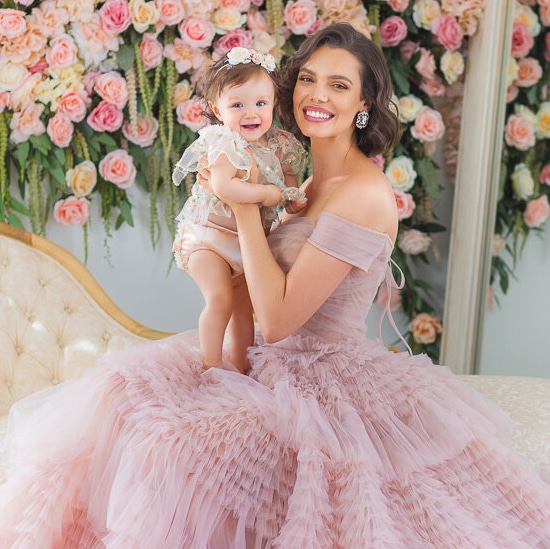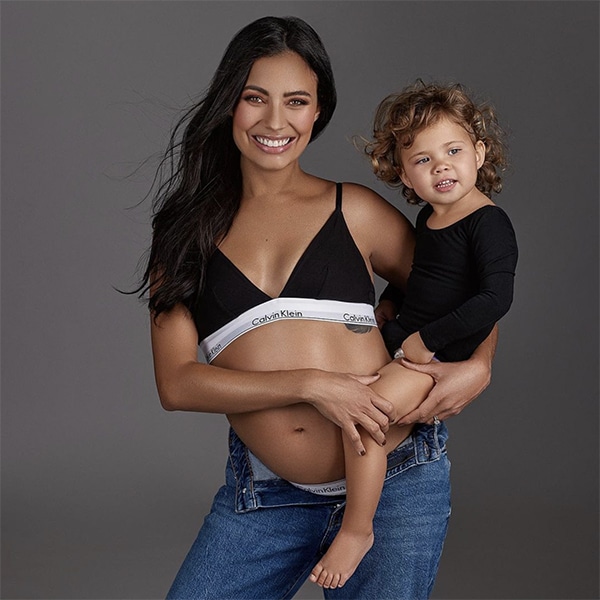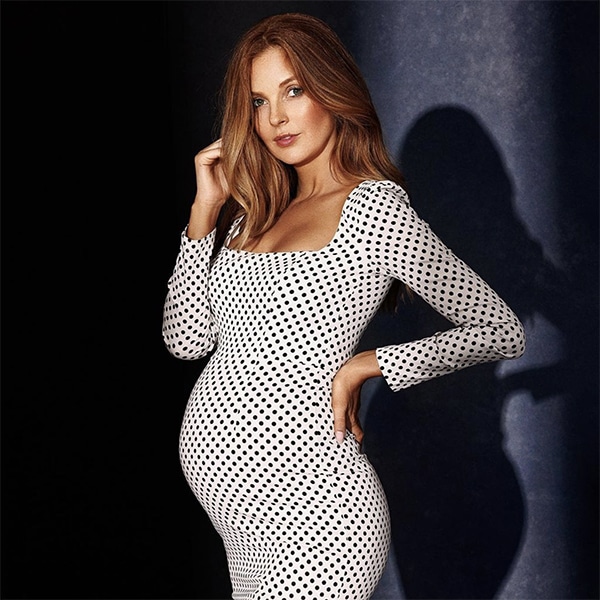Advanced Techniques for Mastering Maternity Photography [Full Guide]
Do you ever find yourself in awe of those stunning maternity photos that radiate warmth, love, and the promise of new life? Do you aspire to capture such timeless moments with the same artistry and skill? If so, you’ve come to the right place!
Maternity photography combines the finesse of portrait photography with the intimacy of storytelling, allowing us to create images that are not only beautiful but also rich with emotion and meaning. But as any seasoned photographer will tell you, mastering the art of maternity photography requires more than just understanding your gear.
In this comprehensive guide, we will dive into some advanced techniques to elevate your maternity photography skills. We’ll explore the art of using compositional rules, the technique of creating a ‘frame within a frame’, the magic of reflection photography, and the harmony of dynamic symmetry. We’ll also dive into the topic of aesthetic photography and how changing your perspective can completely alter the mood and storytelling of an image.
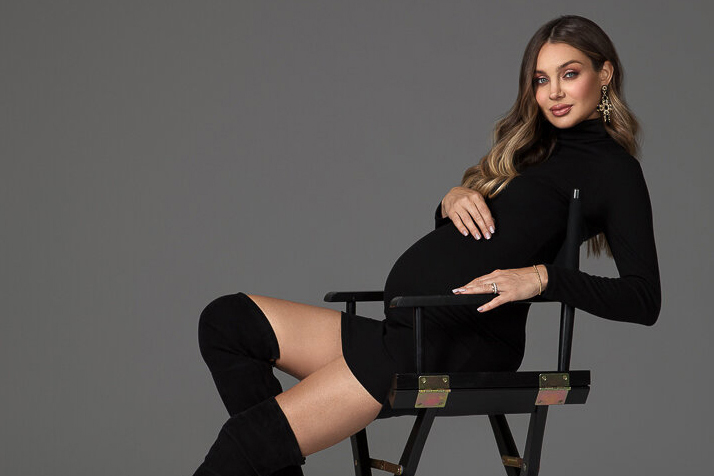
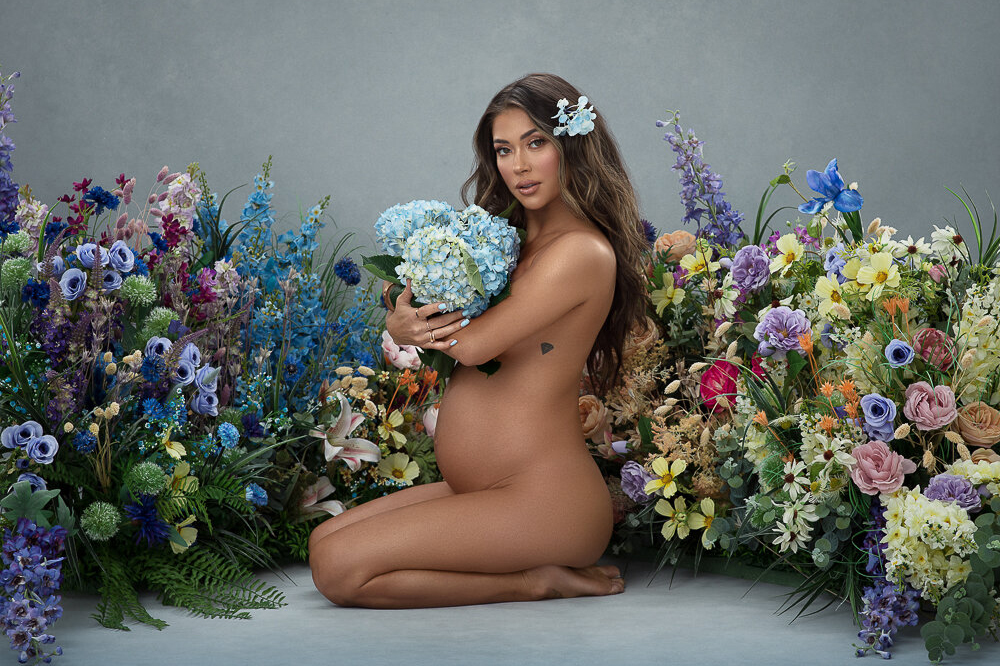
Basic Compositional Rules in Photography
Understanding and implementing basic compositional rules can elevate your maternity shots from ordinary to extraordinary. See them as well as example shots below.
The Rule of Thirds
This rule suggests dividing your frame into nine equal parts – two horizontal lines and two vertical lines. The intersection of these lines is where you should place your subject, often leading to a more balanced and engaging photo.
Outdoor Portrait: Imagine the expectant mother standing in a park, the soft glow of the setting sun illuminating her profile. If you divide your frame into nine equal parts, you could position her on the right vertical line. Her gaze could be directed towards the left, creating a sense of anticipation and space.
Close-up of Belly: Focus on the belly, placing it along one of the vertical lines, preferably where the lines intersect. This highlights the pregnancy and draws the viewer’s attention to it.
Leading Lines
Leading lines draw the viewer’s eye into the image. They can be anything from a path, a fence, or even the mother’s arm leading towards her belly. Use leading lines to draw attention to the mother or her baby bump.
Using Arms: Have the mother-to-be place her hands on her belly, creating a natural leading line towards it. This emphasizes the pregnancy and creates a tender, intimate shot.
Path or Road: Shoot in a location where there’s a path or a road that leads to the mother. The lines created by the path will guide the viewer’s eye towards the main subject.

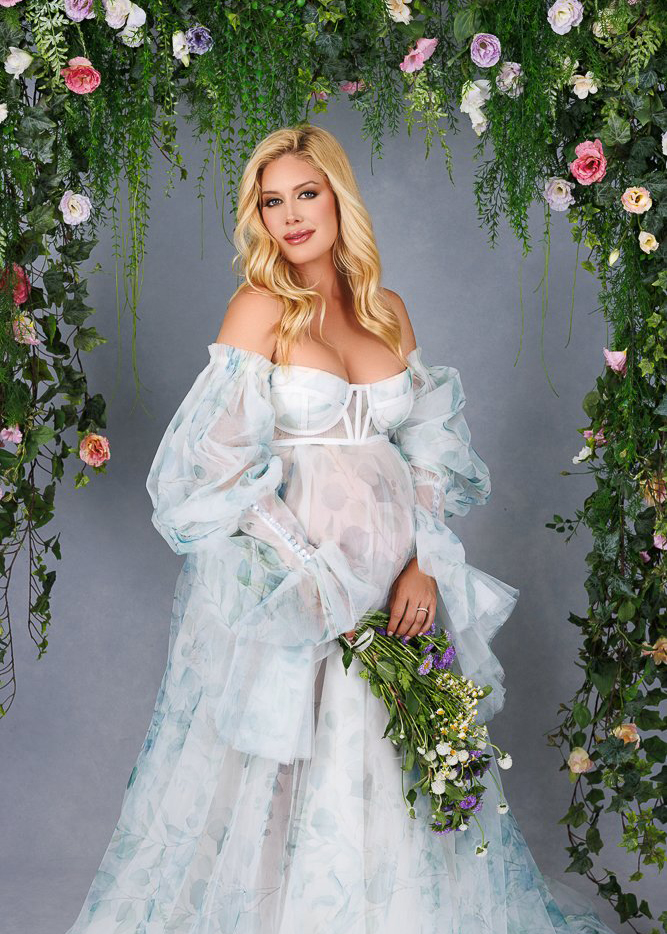
Framing
Framing involves using elements in your surroundings to frame your subject, thereby focusing the viewer’s attention on the main subject.
Window Frame: Position the mother in a window, using the window frame to encapsulate her figure. The light coming through the window can provide natural, beautiful lighting. The settings might be an aperture of f/2.8, a shutter speed of 1/200, and an ISO of 200-400, depending on the light.
Viewpoint
The viewpoint or perspective from which you shoot can drastically change the feel of your maternity photos. Don’t be afraid to experiment – shoot from above, below, or even from the level of the baby bump.
Bird’s Eye View: Shoot from above as the mother is lying down, maybe in a field of flowers or on a bed. This angle gives a unique perspective and can make the image more interesting.
Low Angle Shot: Position yourself lower and shoot upwards. This angle can make the belly look more prominent and give a powerful feel to the image.
Depth
Creating a sense of depth in your images adds a three-dimensional feel, making them more engaging. Use elements in the foreground, middle ground, and background to create layers in your photos.
Using Foreground Elements: Shoot through flowers or leaves, using them as a blurry foreground that adds depth to your image. The mother can be positioned in the middle ground, with maybe a beautiful landscape in the background.
Playing with Shadows: Use shadows to add depth to your images. The shadow of the mother or objects can create a sense of three-dimensionality.
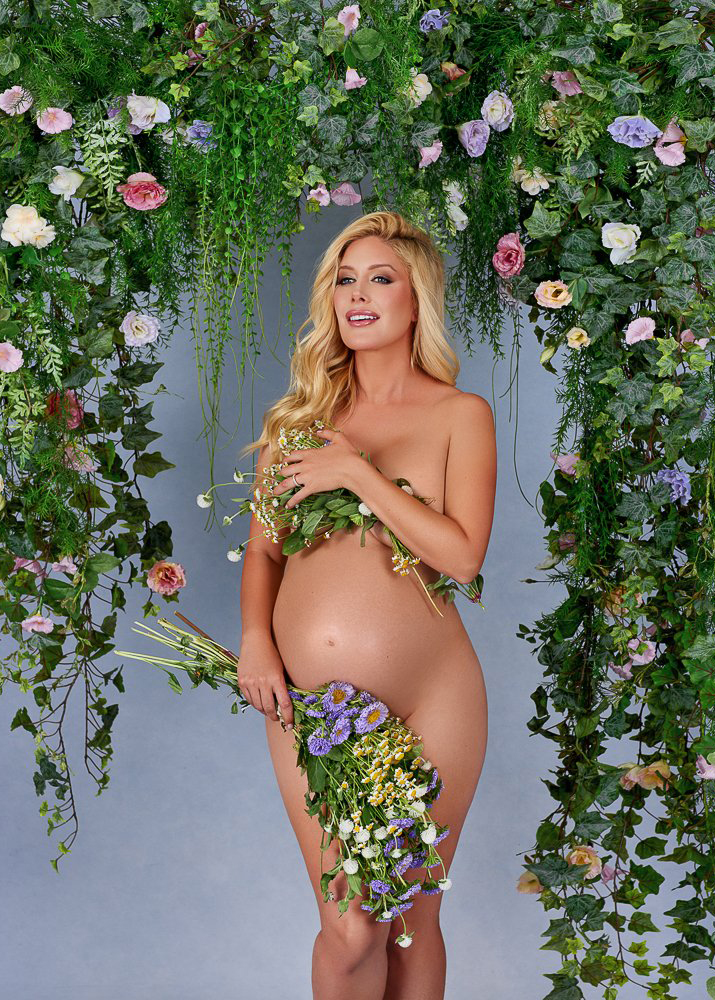
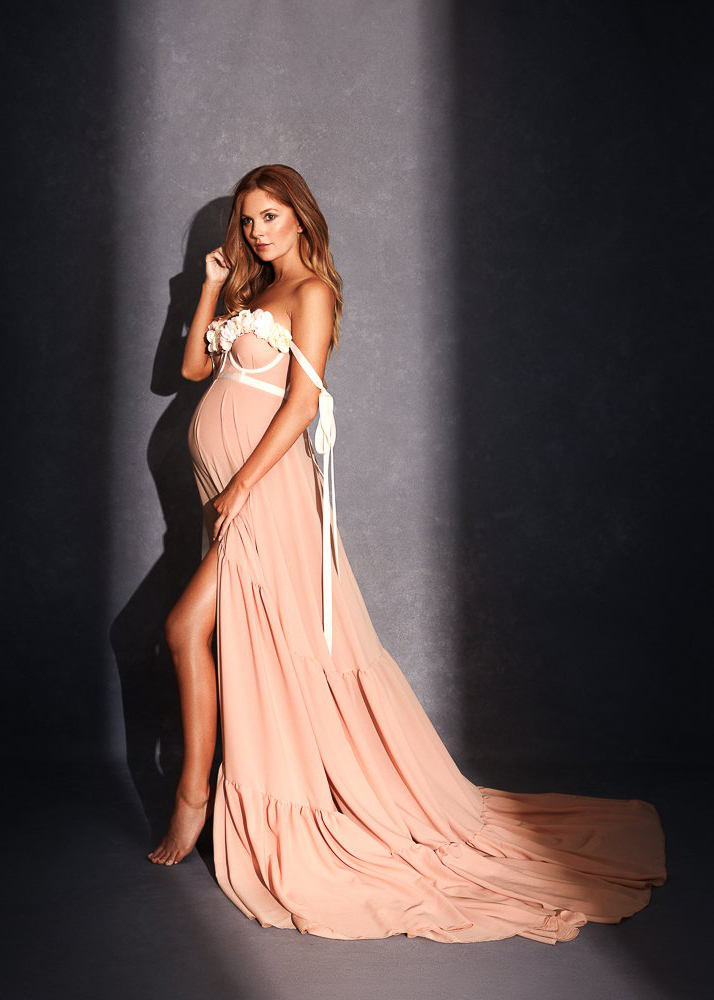
“Frame Within a Frame” Photography
Frame within a frame refers to the technique where you use elements in the scene to create a frame around your subject. This technique draws attention to your subject and adds depth and context to your image. For maternity shoots, consider using elements like doorways, arches, or even tree branches to create a natural frame around the expectant mother.
Using the technique of ‘frame within a frame’ can add depth, context, and focus to your maternity photographs. Here are three scenarios to illustrate the technique, including suggested camera settings:
Doorway Frame: Position the mother in an open doorway, using the door frame to encapsulate her. This could be her own home’s doorway, adding a personal touch to the image. The soft, ambient light from inside can create a warm and welcoming effect. For this shot, you might want to use an aperture of f/2.8 to keep the subject sharp and blur out the background. A shutter speed of 1/200 and an ISO of 400 would work well under normal lighting conditions.
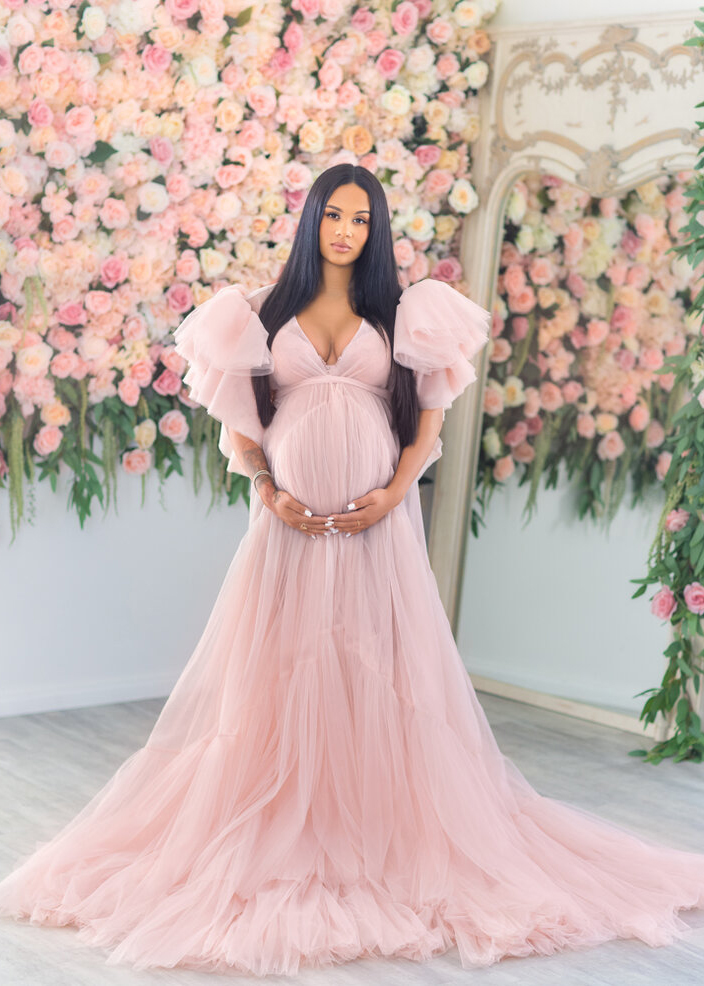
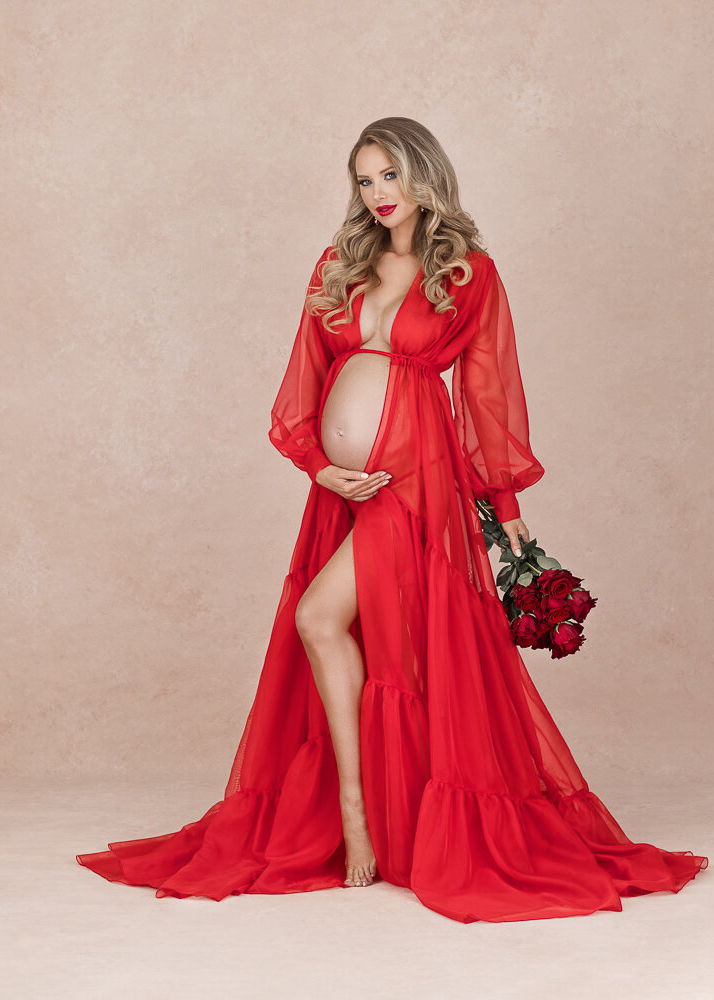
Nature’s Frame: Use natural elements, such as a tree with overarching branches or a tunnel of foliage, to frame the mother. This gives the image a serene, organic feel. An aperture of f/5.6 will provide a deeper depth of field, ensuring the mother and the natural frame are in focus. A shutter speed of 1/250 and an ISO of 200 can ensure a well-exposed shot on a sunny day.
Architectural Frame: Arches, windows, or other architectural elements can serve as striking frames. Place the expectant mother inside a large arch in a park or a historic building. For this setting, use a wide aperture (f/1.8) to blur the details of the architecture, bringing attention to the mother. A shutter speed of 1/200 and an ISO of 100-200 should work under good lighting.

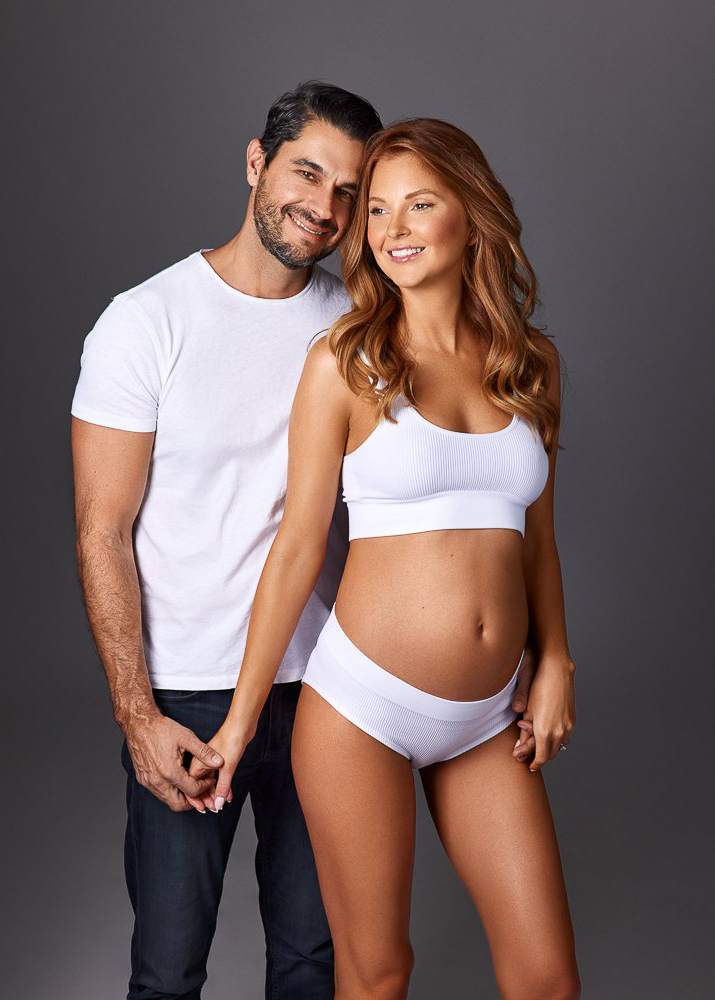
Reflection Photography
Reflections can add an artistic and sometimes surreal element to your maternity photos. They can be found in various places – mirrors, bodies of water, or even shiny surfaces like glass or polished floors. To capture a successful reflection photo, ensure your main light source is facing the reflective surface. Consider the angle at which you’re shooting, as different angles will change the reflection’s appearance.
Using reflections in your maternity photography can add a unique, artistic twist to your images. Here are three scenarios using reflection photography:
Mirror Reflection: The mother could be looking into a mirror, with her reflection forming the main focus of the shot. The camera settings will depend on the room’s lighting. For example, in a well-lit room, an aperture of f/2.8, a shutter speed of 1/160, and an ISO of 200 should work well.
Water Reflection: This could be done by a calm lake or a puddle after the rain. Position the mother near the water so her reflection is clear. You might want to use a smaller aperture (f/11) to keep both the subject and her reflection in focus, a shutter speed of 1/125, and an ISO of 100 in bright daylight.
Glass Reflection: Shoot through a window where the mother’s reflection is visible. This could create an intimate, candid effect. For this, you could use an aperture of f/2.8 to blur the background, a shutter speed of 1/200, and an ISO of 400.
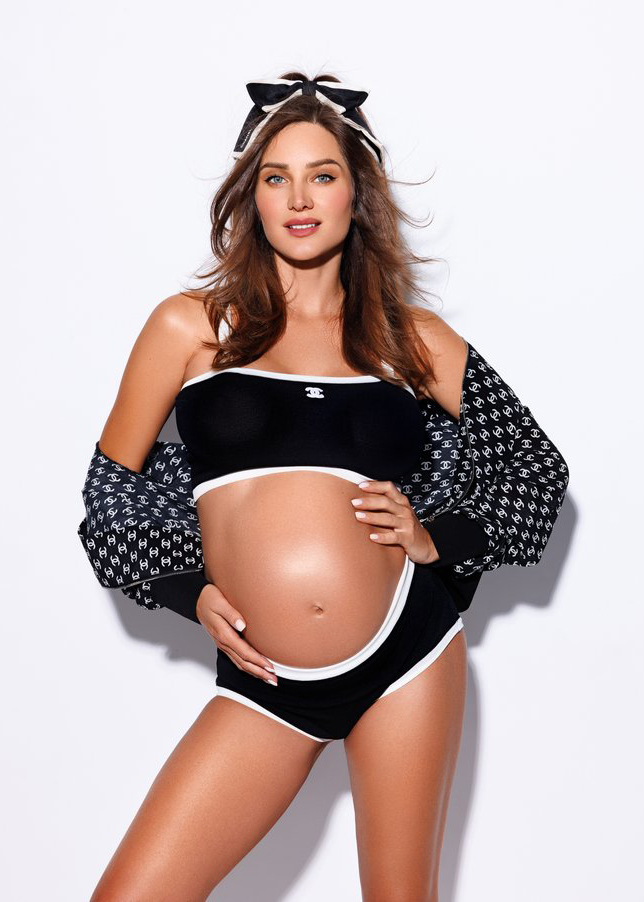
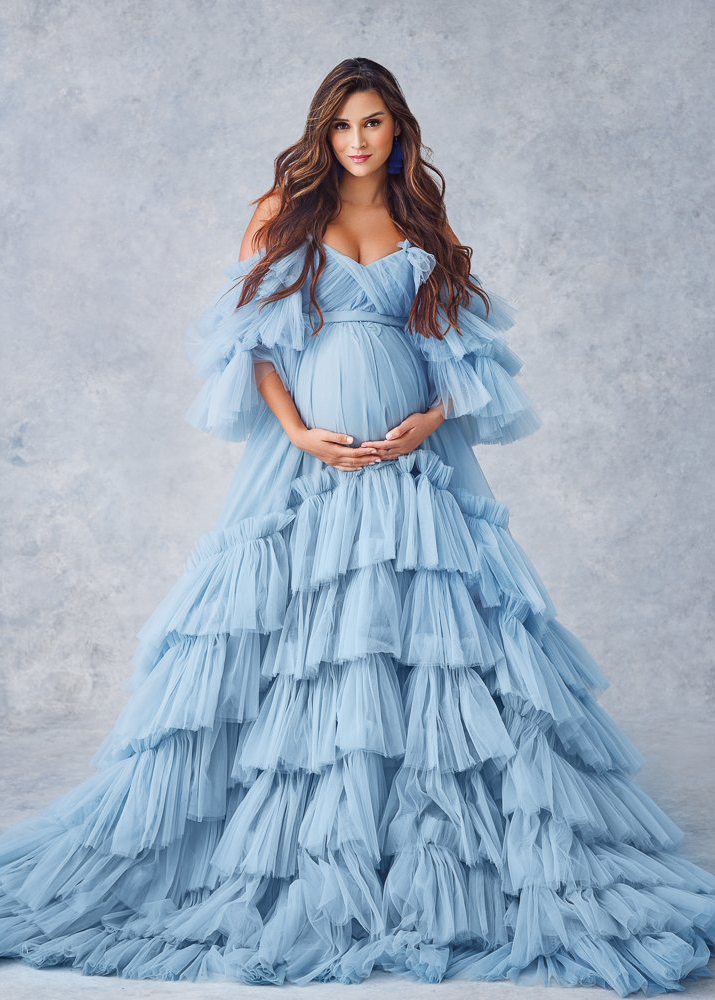
Dynamic Symmetry in Composition
Dynamic symmetry goes beyond the rule of thirds, providing a more complex and harmonious design. It involves dividing your frame with diagonal lines (from corner to corner), and perpendicular lines from those diagonals. This creates a grid of triangles and rectangles, which can guide the placement of your subjects and elements.
In maternity photography, you can use dynamic symmetry to create balance and harmony. For example, the mother’s body can align with one of the diagonal lines, while elements like furniture or natural features can be placed along other lines.
Dynamic symmetry allows you to create balanced and harmonious compositions. Here are three scenarios for maternity photography:
Beach Setting: Have the mother walking along the shore, her body aligned with one of the diagonal lines. The horizon can serve as a horizontal line, and elements like a lighthouse or a jetty can fall along other lines. For a beach setting, an aperture of f/8, a shutter speed of 1/500 to freeze the action, and an ISO of 100 would work well.
Home Setting: Place the mother in a room, with furniture or architectural features serving as lines in the grid. For example, the edge of a table could align with a diagonal line. In a well-lit indoor setting, an aperture of f/2.8, a shutter speed of 1/60, and an ISO of 400-800 could work well.
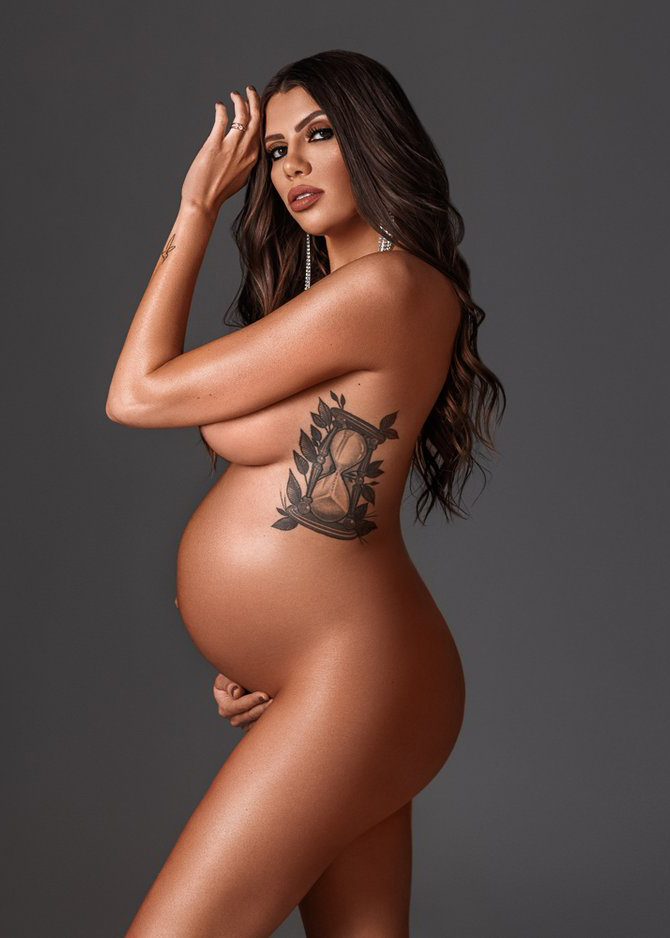
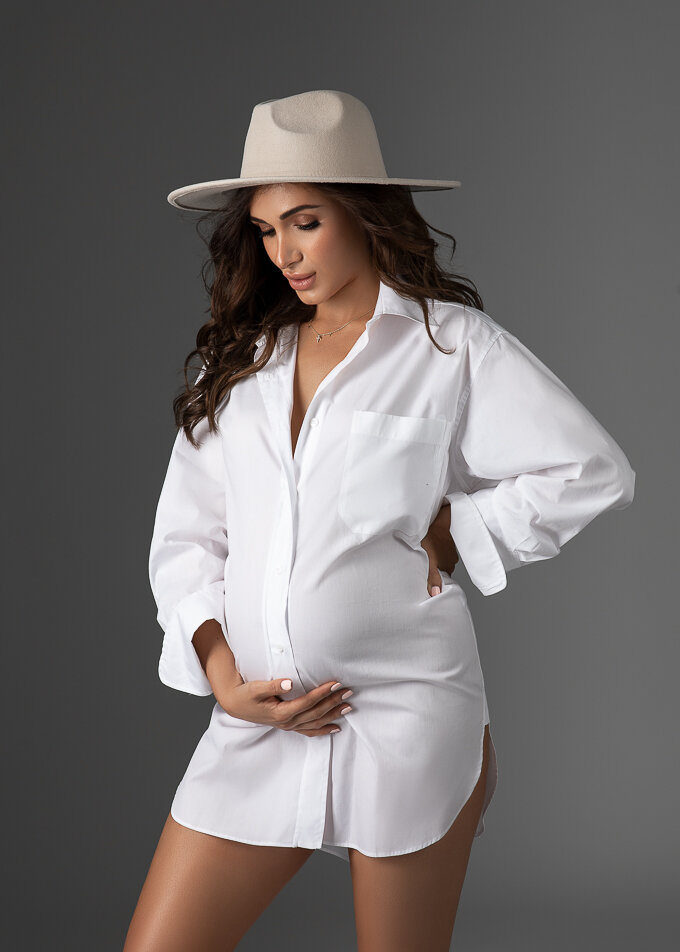
Outdoor Park Setting: A park provides ample opportunities to use dynamic symmetry. Align the mother with a diagonal line, while elements like benches, pathways, or trees can fall along other lines. For an outdoor park setting, an aperture of f/5.6, a shutter speed of 1/250, and an ISO of 200 would ensure a well-exposed shot.
Studio Setting: For maternity photo shoots in studio, position the mother diagonally within the frame, aligning her body with one of the diagonal lines. Use props like chairs, a backdrop stand, or even shadows to create lines within your composition. For instance, the back of a chair can serve as a diagonal line, and its shadow can provide a perpendicular line.
To create depth, you can also use different lighting sources. A key light can be placed to illuminate the mother, while a fill light can subtly light the background, further enhancing the three-dimensionality of the scene.
In a studio setting with controlled lighting, you could opt for an aperture of f/8 to ensure sharpness throughout the image, a shutter speed of 1/125 to avoid any motion blur, and an ISO of 100-200 to capture a clean image with minimal noise. Remember to adjust these settings based on the actual lighting conditions and the look you’re aiming for in your shot.
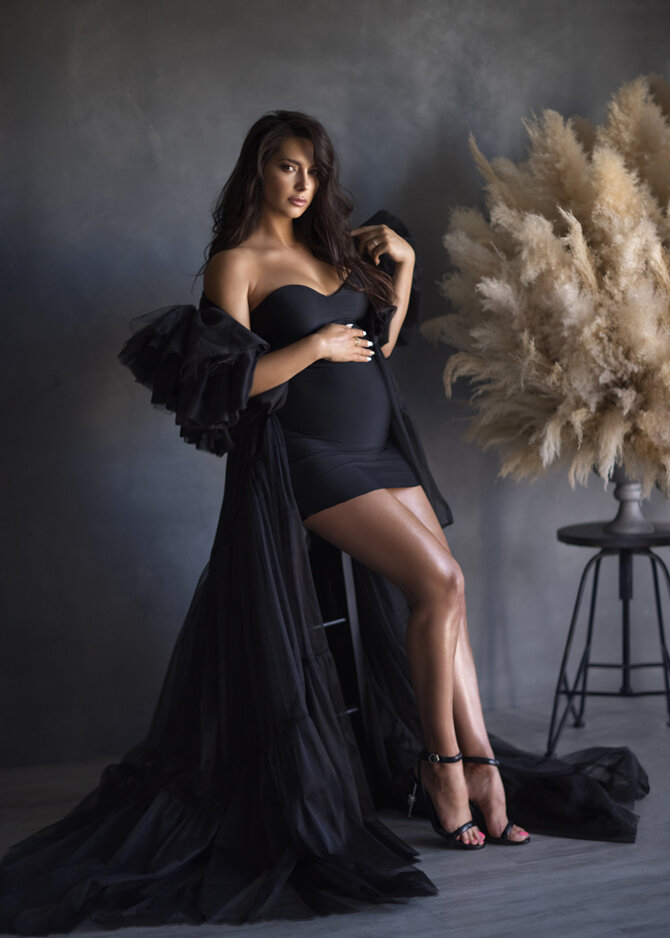
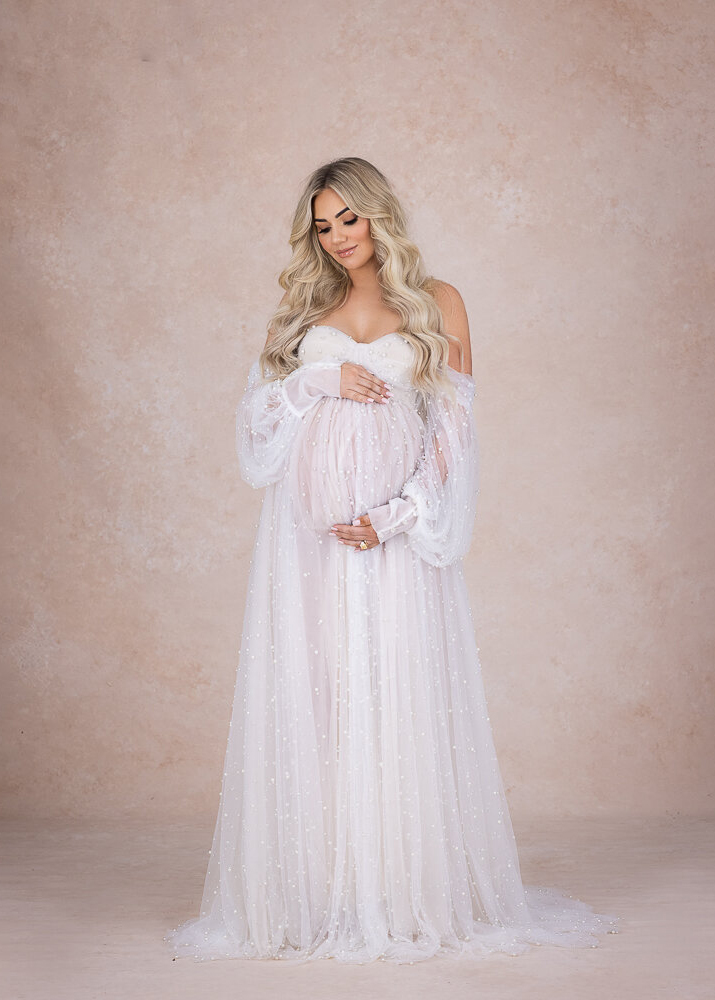
Perspective in Photography
Perspective in photography refers to the dimension and depth of objects in a scene, and it’s a crucial aspect that can make or break a photograph. Changing your perspective can completely alter the mood, composition, and storytelling of an image. Here are three scenarios illustrating the use of perspective in maternity photography, along with suggested camera settings:
Eye-Level Perspective: This is the most common perspective, as it’s how we typically see the world. Position yourself at the mother’s eye level and capture her in a way that is both personal and relatable.
Low-Angle Perspective: Shooting from a low angle can make the subject appear dominant or important. In maternity photography, this angle can be used to emphasize the belly. Lay on the ground and shoot upward, capturing the mother’s belly against the backdrop of the sky or a high ceiling.
High-Angle Perspective: Shooting from a high angle can give a comprehensive view of the scene, emphasizing the environment as much as the subject. This could be used effectively in an outdoor maternity shoot, capturing the mother in a beautiful setting. A drone could be used for a truly high-angle shot.
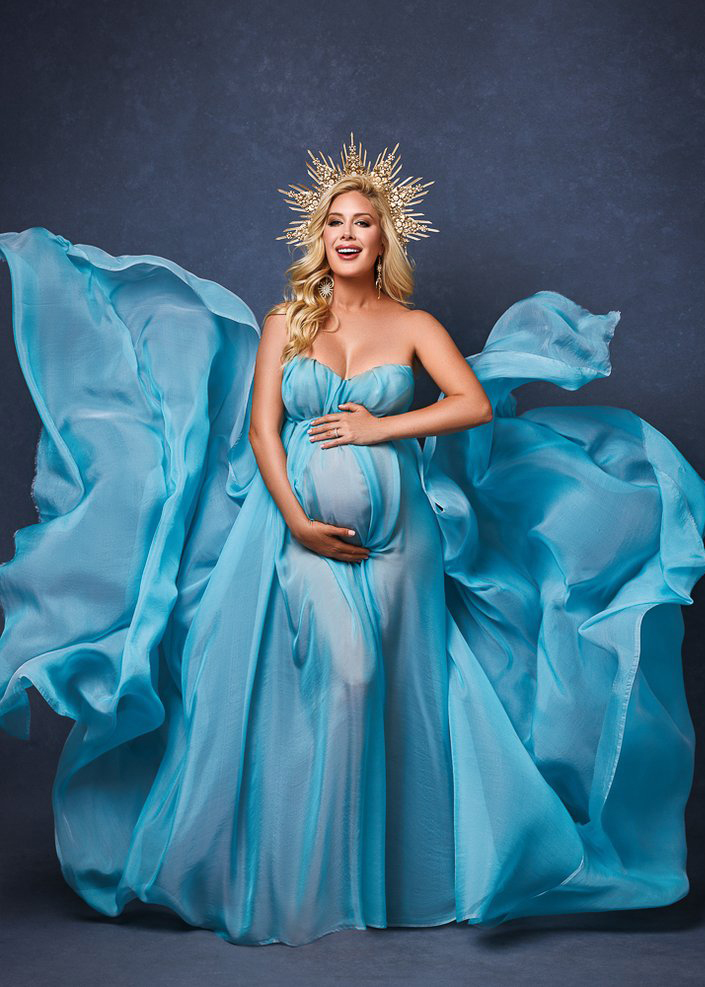

Aesthetic Photography
Aesthetic photography aims to create visually pleasing images that evoke emotions. This can be achieved through various means, such as color, composition, subject matter, or lighting. In the context of maternity photography, aesthetic photography can be used to create images that not only document the pregnancy but also evoke the joy, anticipation, and beauty of this special time. Here are three scenarios illustrating the use of aesthetic photography in maternity shoots:
Color Aesthetics: Use color to create a specific mood. For instance, soft pastels can convey a sense of calm and tranquility, while bold, vibrant colors can evoke energy and joy. You might choose a location, props, or clothing in specific colors to achieve your desired aesthetic.
Minimalist Aesthetics: A minimalist aesthetic can bring focus to the mother and her pregnancy. Use a simple background, like a plain wall or a clear sky, and avoid clutter in the frame.
Vintage Aesthetics: A vintage aesthetic can lend a timeless feel to your maternity photos. This could be achieved through the use of vintage clothing, props, or even post-processing techniques to add grain or adjust the color palette.
These settings are starting points and adjustments might be needed based on your specific situation but understanding the principles behind these settings will help you make them.
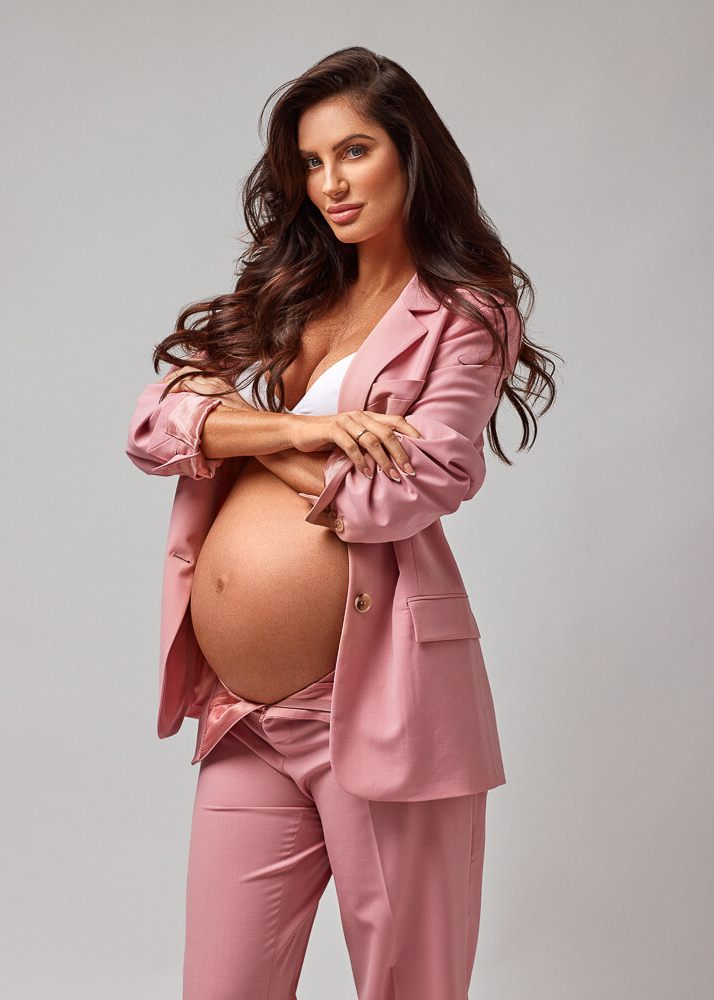
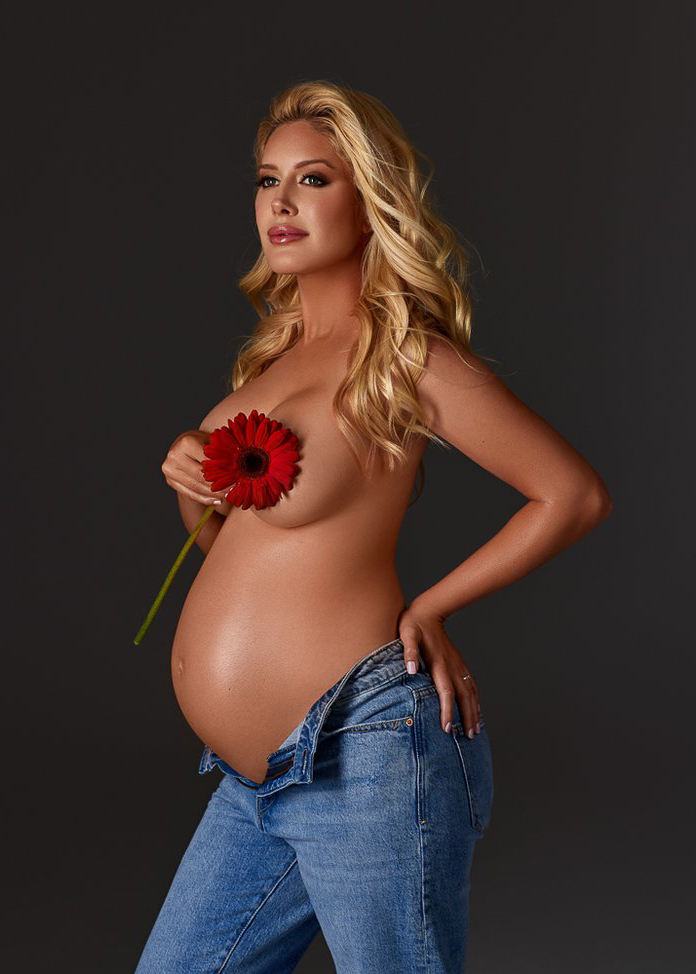
Oxana Alex Photography
At Oxana Alex Photography, we are open for booking in studio fashion and maternity sessions. Designer wardrobe and accessories for your session are free or charge. Our studio is located at 2100 Sawtelle Blvd UNIT 307 Los Angeles, CA 90025, USA. You can see our photoshoot pricing here & our photography reviews here.
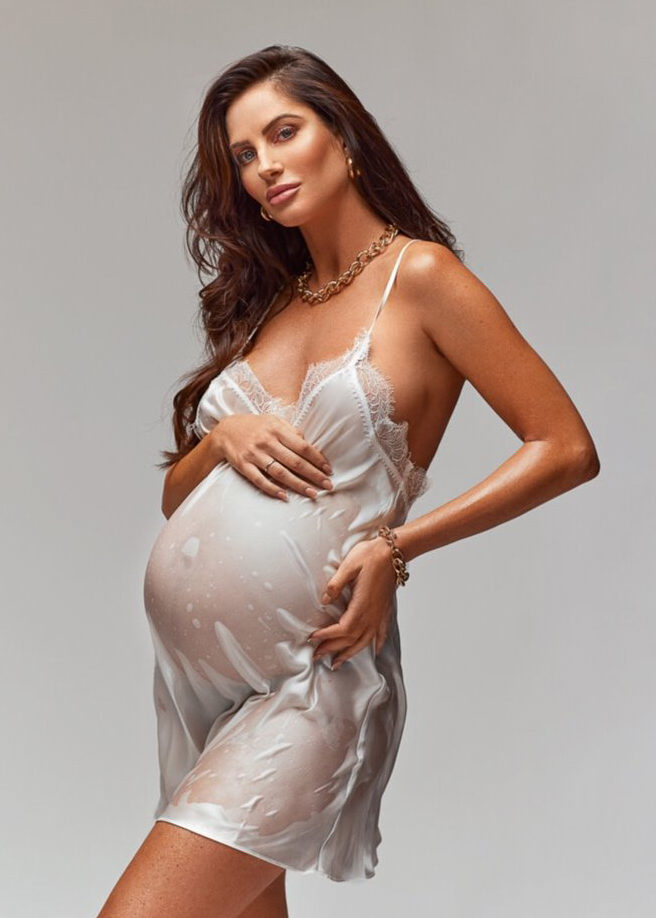
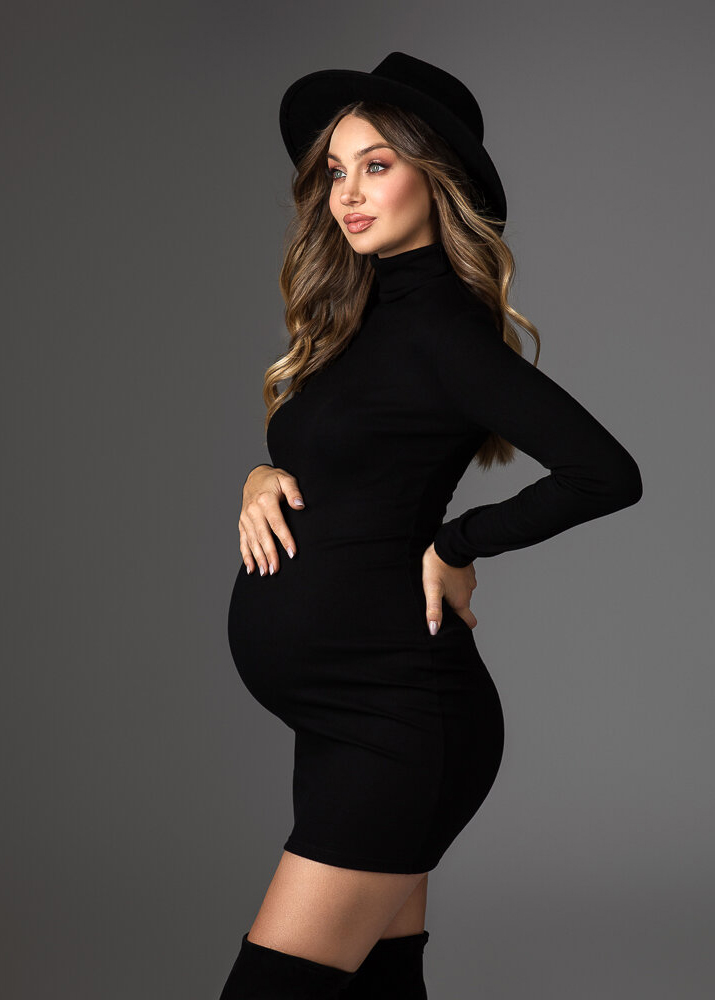
Conclusion
Mastering maternity photography involves more than just understanding your camera settings. It requires a keen eye for composition and an ability to use various techniques to create engaging and meaningful images. The rules of composition, frame within a frame, reflection photography, and dynamic symmetry are all powerful tools in your arsenal.
Also keep in mind that rules are meant to be broken! Use these techniques as guidelines, and don’t be afraid to step outside of them and let your creativity shine.
The true magic of maternity photography lies not only in technical mastery but also in the ability to connect with your subject, to capture the essence of her journey, and to encapsulate the love, anticipation, and joy that herald the arrival of new life.
Keep experimenting, keep learning, and above all, keep shooting! Each mother, each family, each maternity session is unique, providing endless opportunities to create beautiful, meaningful, timeless images.
How do I schedule my session?
You can schedule your session by emailing [email protected] or by texting our studio at (310) 854-9695.

